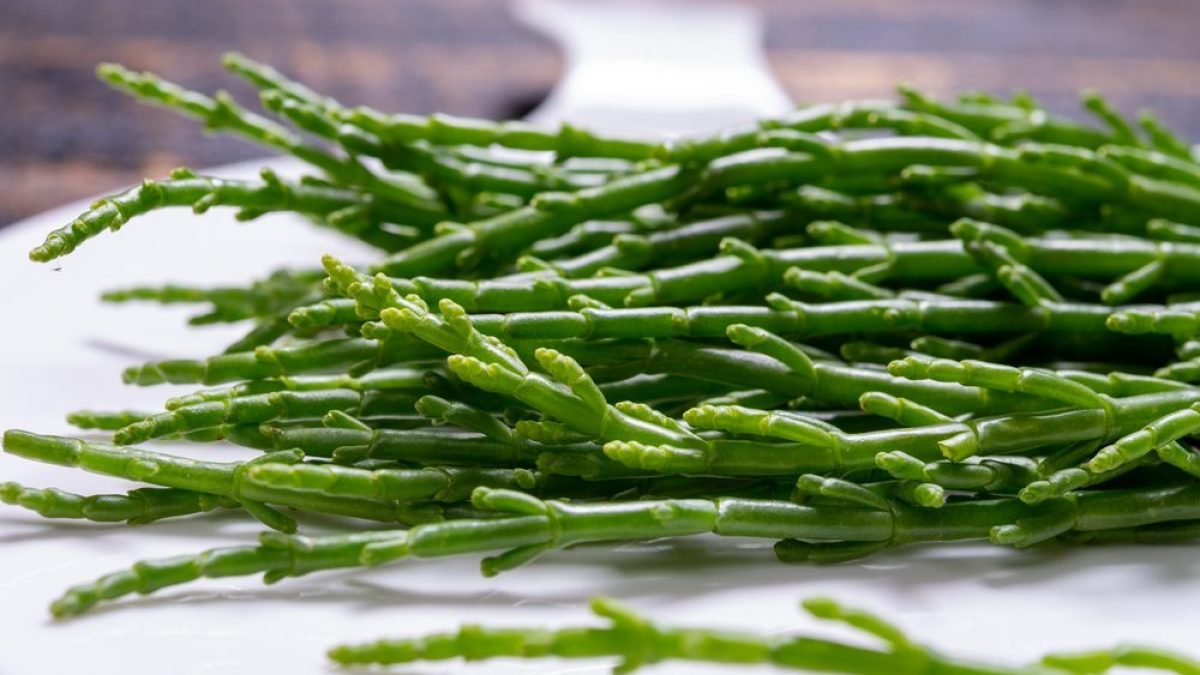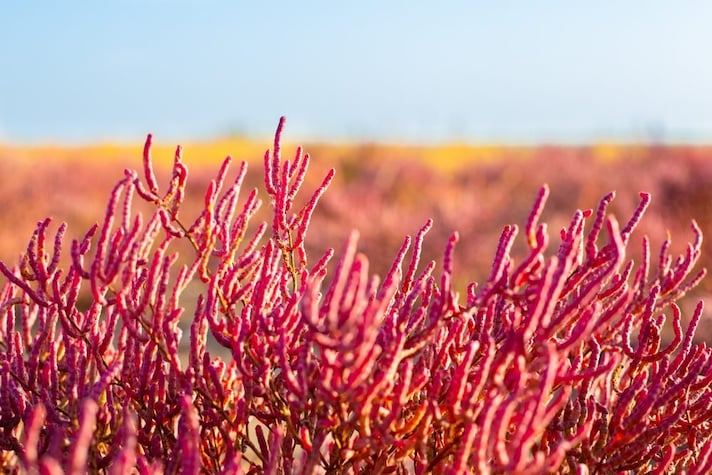
It's not a seaweed, it's not a vegetable, but a peculiar cross between the two: salicornia grows near the sea, and it's precisely this ambiguous nature that has made it so interesting. It's no coincidence that more and more great culinary names are using it, from Antonia Klugmann to Enrico Crippa. The reason for the love for this plant, widespread in saline and brackish areas, also known as "sea bean," lies in its unique flavor: it's a savory seasoning that, despite not being a seaweed, manages to add a marine flavor to recipes.
Furthermore, salicornia also has numerous beneficial properties, a characteristic that makes this plant an ingredient that should increasingly be had in the pantry and that should be learned to use in the right way to give your dishes a truly unique boost of flavour.
What is Salicornia (Glasswort) and How Can You Recognize It?
Glasswort is an edible herbaceous succulent plant (Salicornia Linnaeus) that grows wild along the seashore in coastal areas, or more generally near saltwater ponds. It is a very ancient plant and according to some accounts, it was used by the Vikings during their long sea voyages, as it is a food rich in water and mineral salts.
A beautiful, bright green, glasswort is easy to recognize: it grows in small clusters of bushes no taller than 40 centimeters, with small, straight, fleshy stems and scale-like leaves. It is at its peak ripeness, and therefore ideal for harvesting, during the summer months, from July to September; however, remember to harvest it sparingly, as it is an important plant for biodiversity and a habitat for many migratory bird species.
Glasswort is cultivated across the United States, particularly in coastal and estuarine areas along the East Coast, such as the marshes of Chesapeake Bay in Maryland and Virginia. Significant planting efforts also occur along the Gulf Coast—most notably in Louisiana’s Louisiana State Salt Works and in coastal wetlands of Texas near Corpus Christi—as well as in lagoon environments like the coastal marshes surrounding San Francisco Bay in California.
And if you want to see glasswort to learn about it (but without picking it, because of the pollution there), you can visit the San Francisco Bay National Estuarine Research Reserve in California: it’s a protected area created to preserve one of the last remaining tidal wetlands on the Pacific Coast, and among the many unique plant species safeguarded there, glasswort stands out.

What Does Salicornia Taste Like? Sea Bean's Taste and How Is It Used?
Although not strictly speaking a seaweed, salicornia has a strong, slightly pungent, salty flavor, making it a perfect seasoning. Indeed, precisely because of its savory content and sea-like taste, it is used in combination with or as a side dish for fish dishes. But, as we mentioned, salicornia is also similar to vegetables, strongly reminiscent of asparagus and spinach. This characteristic, combined with its fleshy and succulent texture, makes it a perfect addition to omelettes, sauces, and soups.
Generally, the best way to cook glasswort is to quickly blanch it in unsalted water and season it with a drizzle of oil and a squeeze of lemon. However, if it's very fresh, it can also be eaten raw in salads, adding a touch of crunch. Glasswort doesn't require any special attention, other than using minimal or no salt at all: the plant takes care of the flavor entirely.
How Do Famous Chefs Use Salicornia and How To Cook It At Home
American chefs are increasingly embracing salicornia (also called sea beans or glasswort) for its crisp, salty flavor and sustainability. In many restaurants, it’s served fresh as a garnish for seafood, tossed into salads, or lightly cooked to add natural brininess without extra salt. Others dehydrate and grind it into “green salt,” a nutrient-rich seasoning with less sodium than table salt. Forward-thinking chefs also experiment with its seeds and oil in dressings, baked goods, or as crunchy toppings. With farms like Heron Farms in South Carolina supplying salicornia hydroponically while restoring marshlands, this unique ingredient has become both a gourmet favorite and a symbol of eco-friendly dining in the U.S.
Much more common today, thanks in part to its rediscovery by chefs, salicornia is easier to find. And that's a good thing, because you can use it in a variety of dishes at home without being a culinary professional.
After blanching the glasswort for a few minutes, you can use it in a variety of ways: as a condiment for pasta or risotto, as a flavoring for soups, to accompany fish dishes, or paired with eggs, with which it pairs very well. Try adding it to an omelette for a delicious result, for example.
Salicornia can also be added to salads, preserved in oil or fried after being dipped in batter, just like you would do with the more classic zucchini blossom.
;Resize,width=767;)
